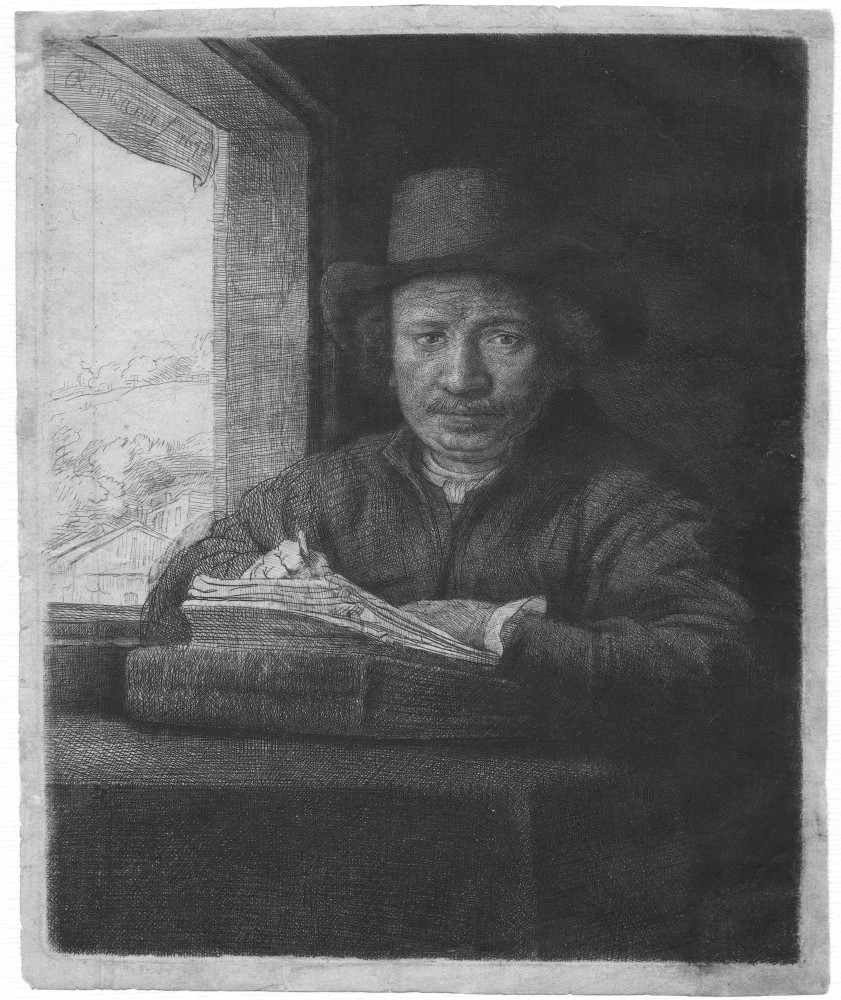Acquaforte, puntasecca e bulino orginale; White-Boon, B22 IV/V; Nowell Usticke, B 22 III/VII; Biorklund-Barnard, BB 48 -A IV/V; mm 160 x 131
Exceptional proof of this print was very rare in the early stages and reported by the scholar Usticke as a "very desirable portrait".
Printed in the fourth state, after the addition of the landscape and some hatching that intensifies the window frame. On the tunic can be seen the beards also reported by the scholar Usticke for early proofs of this state.
Printed on Japanese paper, one of Rembrandt's favourite papers and frequently used for this subject, in fact, specimens preserved in: London, Oxford and Paris (in state II) and in Cambridge, London and Vienna (in state IV). Rembrandt, always in search of unusual and effective results, purchased unusual papers, particularly oriental papers arriving at the flourishing Flemish port. The silky surface, combined with the great compactness of the paper from Japan, allowed him to achieve the desired pictorial effects.
Complete with the entire engraved part and a small margin all around.
Along the right and lower margins, there are some very short tears, almost invisible to the naked eye and reinforced on the recto. In addition, the lower right-hand corner is restored. Features that do not compromise the desirability of a work of fascinating, as well as rare, quality.
Rembrandt's great self-portraits are at the height of his expressive intensity. Of them all, this is the only example of the intimate and affectionate vein the artist usually reserved for scenes from the life of Jesus and masterful landscapes. The technique is the favoured one of chiaroscuro, realised with drypoint barbs, highlighted by a false 'unfinished' of the landscape and the detail of the drawing hand.
It was with Rembrandt, and in the Netherlands, that etching reached its greatest development in the 17th century. His curiosity drove him to experiment with mixed techniques, to seek out different media from the usual (such as paper imported from Asia), with an entirely personal style that would favour him in his own artistic affirmation.
In addition, Rembrandt was formed in a particularly effervescent intellectual climate: Protestantism was gradually gaining support and the naval, economic and commercial hegemony of Holland during the century, as well as its domination over the colonies, allowed for an increasingly intense economic rise of the bourgeoisie, a class that aspired to grow intellectually and socially.
The guilds of trades grew in importance over time and with it the desire of some members to distinguish themselves within them, commissioning portraits and self-celebrating works. Rembrandt is the artist who best interprets this atmosphere and adheres to it through engraving as well as painting. His first engravings can be dated to 1626; he immediately displayed an extraordinary technical skill that enabled him to overcome all the limitations of etching, used as a pictorial form capable of creating chiaroscuro, plasticity of form and freshness of sign, all similar to drawing.

